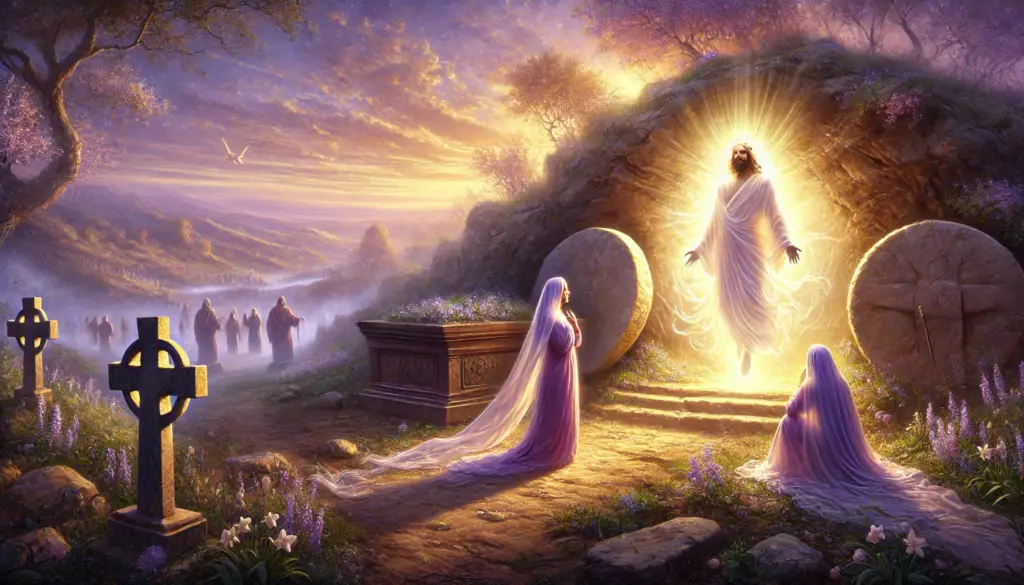It was just before dawn, and the hills of Judea were still cloaked in purple shadows. A hush lay upon the world, as if creation itself held its breath. Deep inside the new tomb of Joseph of Arimathea, where Jesus of Nazareth had been laid to rest, a miracle beyond human understanding was unfolding.
The lifeless body of Jesus lay still, swathed in burial cloths. Outside, the Roman guards kept watch, unaware of the grand drama taking place behind the stone. They had done their duty—his body was sealed, and all seemed finished. But the divine story was not over.
The universe stirred.
Without earthquake or sound, without a flash of lightning or rolling thunder, the spiritual form of Jesus—the morontia Jesus—came forth from the tomb. He did not roll away the stone. He needed no path made by human hands. In the quiet, before even the birds had begun to sing, the Son of Man stepped from time into eternity and back again, transformed.
This was not an act of spectacle but of sublime certainty.
He did not rise because mankind needed payment for sin. Jesus’ death was not a sacrifice to appease an angry God, nor a transaction in a cosmic court. The Master freely gave his life, not because he had to, but because he chose to do the Father’s will—all the way through suffering and death. And now, he returned—not as a bloodied redeemer—but as a radiant example of life beyond death, of divine faithfulness, and of eternal hope.
The angelic hosts looked on in awe. The higher intelligences of creation rejoiced, not because justice had been served, but because love had triumphed, and Jesus, the sovereign Son of God, had completed his bestowal mission.
When the women arrived at the tomb later that morning—Mary Magdalene leading the way—they found the stone rolled away by seraphic hands. The guards had fled in fear, and only the empty wrappings remained. Confused and sorrowful, Mary stayed behind, weeping. It was then that Jesus appeared to her—not as a ghost, but alive, standing in the garden, calling her by name.
“Mary.”
She turned and gasped. “Rabboni!”
With gentleness and calm, he told her not to cling to him—not yet—for he had not fully returned to the Father. But his voice, his eyes, his presence—they were unmistakable. He had returned not just to her, but to the world.
Throughout the day, Jesus appeared to others—first to the women, then to Peter, and to the two travelers on the road to Emmaus. Each time, he appeared in love, with peace, and without vengeance, never rebuking those who had turned away or denied him.
Later, he revealed himself to the apostles in the upper room, passing through locked doors, bringing comfort, reassurance, and peace. “Peace be upon you,” he said, offering no condemnation, only courage.
For forty days he would remain, appearing and teaching, reassuring them that death was not the end, and that God’s will, though often mysterious, was always love-driven, purposeful, and good.
His resurrection was not just a return to life—it was a cosmic affirmation: that faith in the Father leads not to destruction, but to transformation. That the universe is a friendly place, and that no matter how dark the tomb, love will rise.
On that spring morning in AD 30, the stone tomb stood empty, but the hearts of those who loved him began to overflow. And from that day on, they knew—not from doctrine, but from experience—that truth is living, love is eternal, and God’s will is the pathway to freedom.

